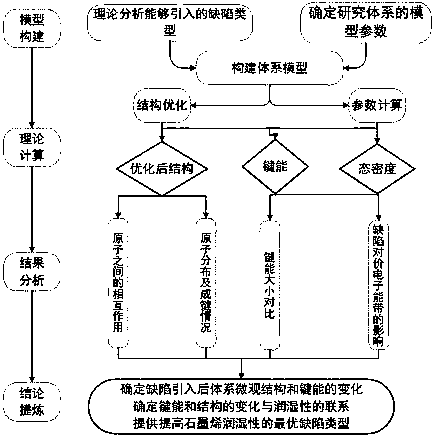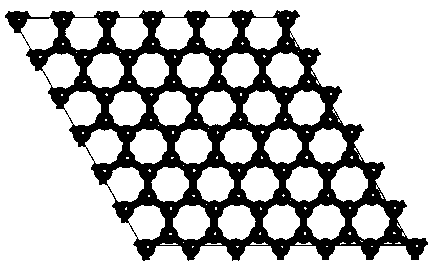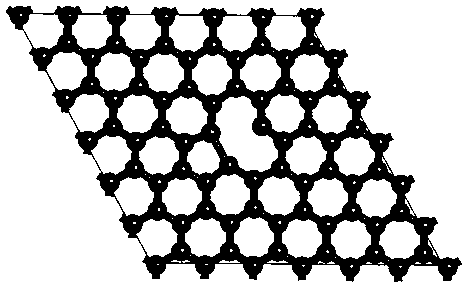A predictive method for wettability between defect-introduced graphene and metals
A prediction method, graphene technology, applied in design optimization/simulation, special data processing applications, etc., to save time and cost, reduce blindness
- Summary
- Abstract
- Description
- Claims
- Application Information
AI Technical Summary
Problems solved by technology
Method used
Image
Examples
Embodiment 1
[0032] First, determine the defect types that need to be established in the graphene model according to the defect types that can be introduced in the experiment. 13 Then, the structure optimization of the above five structures was carried out to obtain the most stable structure; secondly, the above four graphene models were combined with the Al 13 Cluster combination and structural optimization were performed to obtain 4 sets of data, and the bond energy and structural parameters between the optimized graphene and metal clusters were calculated; finally, the change law of bond energy was determined, and the influence of bond energy change on wettability was determined as The level of wettability between graphene and metals with different defects is introduced for effective prediction and analysis.
[0033] Determine four structural models of defect-free graphene, vacancy-defect graphene, doped Ni-atom-defect graphene, and adsorbed Ni-atom-defect graphene, such as figure 2 ,...
Embodiment 2
[0038]First, determine the type of defects that need to be established in the graphene model according to the types of defects that can be introduced in the experiment. 13 Then, the structure optimization of the above five structures was carried out to obtain the most stable structure; secondly, the above four graphene models were combined with the Cu 13 Cluster combination and structural optimization were performed to obtain 4 sets of data, and the bond energy and structural parameters between the optimized graphene and metal clusters were calculated; finally, the change law of bond energy was determined, and the influence of bond energy change on wettability was determined as The level of wettability between graphene and metals with different defects is introduced for effective prediction and analysis.
[0039] Determine four structural models of defect-free graphene, vacancy-defect graphene, doped Ni-atom-defect graphene, and adsorbed Ni-atom-defect graphene, such as figu...
PUM
 Login to View More
Login to View More Abstract
Description
Claims
Application Information
 Login to View More
Login to View More - Generate Ideas
- Intellectual Property
- Life Sciences
- Materials
- Tech Scout
- Unparalleled Data Quality
- Higher Quality Content
- 60% Fewer Hallucinations
Browse by: Latest US Patents, China's latest patents, Technical Efficacy Thesaurus, Application Domain, Technology Topic, Popular Technical Reports.
© 2025 PatSnap. All rights reserved.Legal|Privacy policy|Modern Slavery Act Transparency Statement|Sitemap|About US| Contact US: help@patsnap.com



